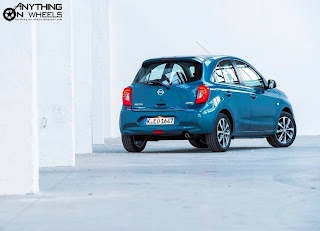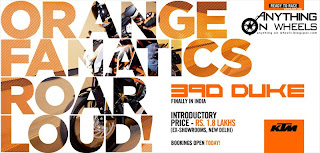It's been almost 24 hours since Ford announced the prices of the Ecosport, its most-awaited compact Sports Utility Vehicle, for the Indian market. We are yet to come out of the shock though. To be honest, Ford's pricing strategy for the base variants of the Ecosport has literally sent shock-waves across the industry and most competitors might be forced to resort to discounting or repricing in the long run. But, for all those prospective customers who hid their frustrations within and patiently waited for the Ecosport for more than a year, it has been well worth the wait.

Ever since it was unveiled to the public at the 2012 Auto Expo in New Delhi last January, the Ecosport has managed to generate such a buzz that not many new vehicles do. That's because the Ecosport's concept of butch looks, compact dimensions and high ground clearance were just 'perfect' for us Indians, given the restricted road space and less-than-perfect road conditions in our cities. After making us all wait with bated breath for 18 months, the Ecosport was finally launched yesterday and the prices of all variants were announced.

The Ford Ecosport is going on sale in four trim levels - Ambiente, Trend, Titanium and Titanium (O), with a choice of three engine options - a 1.5-liter TiVCT petrol, a 1.5-liter TDCi diesel and the hugely-anticipated, technologically-advanced, "International Engine of the Year" award-winning, turbocharged 1.0-liter petrol dubbed the 'EcoBoost'. One variant of the 1.5-liter petrol engine is also available with an option of a 6-speed dual-clutch automatic transmission. While the EcoBoost engine is making its debut in India, all the other engine and transmission options are already available in the new Fiesta.
The diesel variants that are expected to bring in much of the sales are priced at INR 6.69 Lakhs (Ambiente), 7.61 Lakhs (Trend), 8.62 Lakhs (Titanium) and 8.99 Lakhs (Titanium (O)). The 1.0-liter EcoBoost variants can be bought in only the top two trim levels and are priced at INR 7.89 Lakhs for the Titanium trim and INR 8.29 Lakhs for the top-spec Titanium (O) trim. But, it is the starting price of the 1.5-liter petrol variant that has got the industry shaking. The manual variants are priced at INR 5.59 Lakhs (Ambiente), 6.49 Lakhs (Trend) and 7.51 Lakhs (Titanium). The automatic variant is priced at INR 8.45 Lakhs. All prices are ex-showroom Delhi.

Unlike many other cars, even the base Ambiente variant of the Ecosport comes with a decent set of features. Tilt and telescopic steering, power mirrors with integrated turn indicators, remote locking, a music player with Aux-in and Bluetooth functionality and a multi-function display are standard. The only disappointment for us is the absence of rear power windows in the base model. Trend, the next variant in the line-up, adds rear power windows, Antilock Braking System (ABS), steering-mounted audio controls, driver seat height adjust and a host of other nifty features. As we move up, the Titanium variant also gets 16-inch alloy wheels, front fog lamps, climate control, cooled glove box, reverse parking sensor, dual Airbags and Ford's patented SYNC voice-enabled multimedia system with Emergency Assistance. The top-end Titanium (O) variant is fully loaded and adds push-button start, leather seats, keyless entry, side and curtain airbags to the kitty. The Automatic variant also gets the Hill Hold function and Brake Assist feature with Traction Control system.
With the Ecosport, Ford has made its intentions clear. It is willing to take on the competition head-on and has already unleashed the most powerful weapon in its arsenal in the form of aggressive pricing. Its now up to the competitors to decide their next moves. At these prices, the Ecosport not only undercuts the Renault Duster, its prime competitor, but also spoils the party for a whole lot of premium hatchbacks and entry-midsize sedans. Cars like the Maruti-Suzuki Swift and Dzire, Hyundai i20, Honda Amaze and Toyota Etios might be affected by this compact SUV as well.

With stunning design and styling, powerful yet frugal engine options, a long list of features and an extremely competitive pricing strategy, the Ecosport has "blockbuster" plastered all over it. This could become the one big hit apart from the Figo that Ford desperately needs in India. All the company has to do is to take care of the production and the Indian car-buying public will do the rest. Well, the Ecosport may have arrived late on the scene, but it has arrived in style!

















































